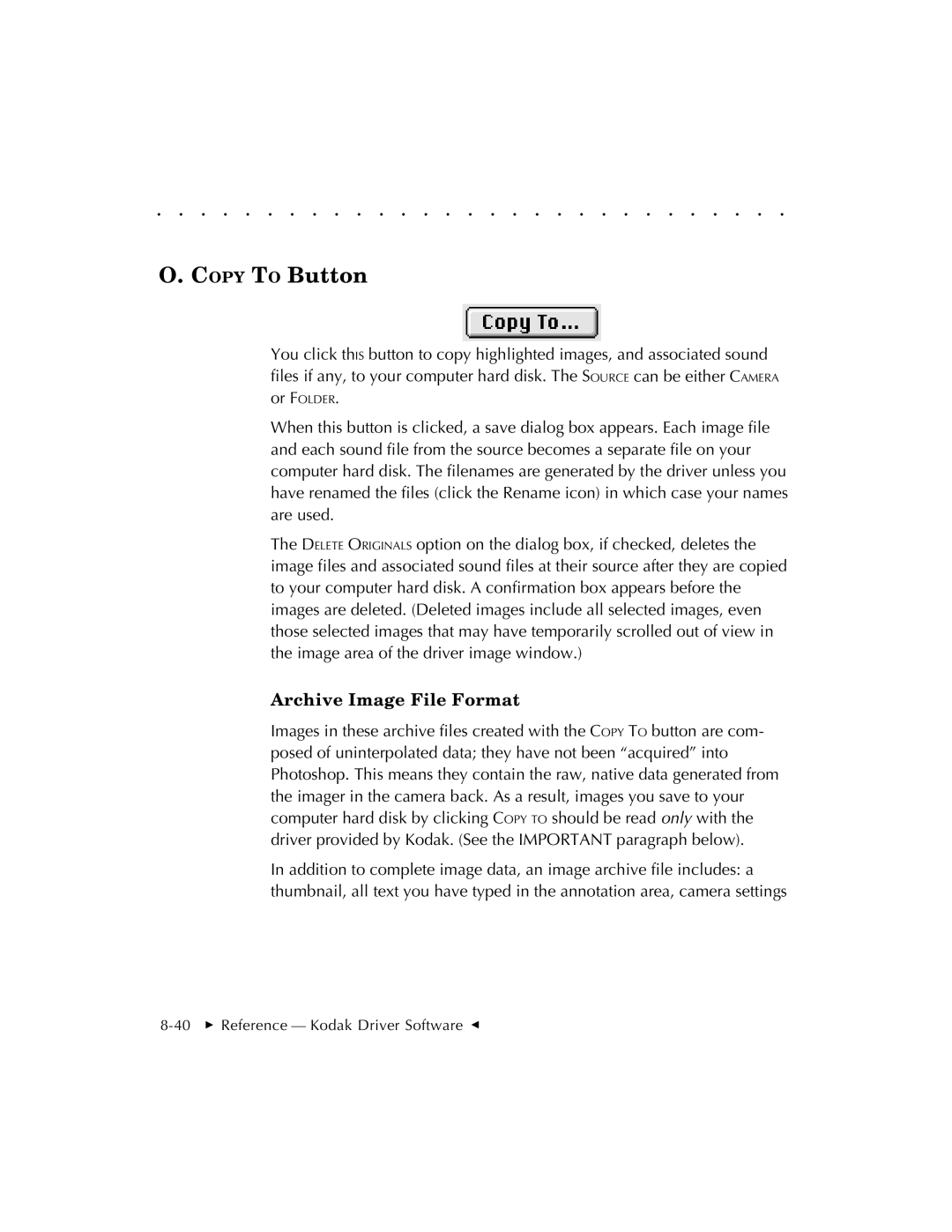. . . . . . . . . . . . . . . . . . . . . . . . . . . . .
O. COPY TO Button
You click thIS button to copy highlighted images, and associated sound files if any, to your computer hard disk. The SOURCE can be either CAMERA
or FOLDER.
When this button is clicked, a save dialog box appears. Each image file and each sound file from the source becomes a separate file on your computer hard disk. The filenames are generated by the driver unless you have renamed the files (click the Rename icon) in which case your names are used.
The DELETE ORIGINALS option on the dialog box, if checked, deletes the image files and associated sound files at their source after they are copied to your computer hard disk. A confirmation box appears before the images are deleted. (Deleted images include all selected images, even those selected images that may have temporarily scrolled out of view in the image area of the driver image window.)
Archive Image File Format
Images in these archive files created with the COPY TO button are com- posed of uninterpolated data; they have not been “acquired” into Photoshop. This means they contain the raw, native data generated from the imager in the camera back. As a result, images you save to your computer hard disk by clicking COPY TO should be read only with the driver provided by Kodak. (See the IMPORTANT paragraph below).
In addition to complete image data, an image archive file includes: a thumbnail, all text you have typed in the annotation area, camera settings
